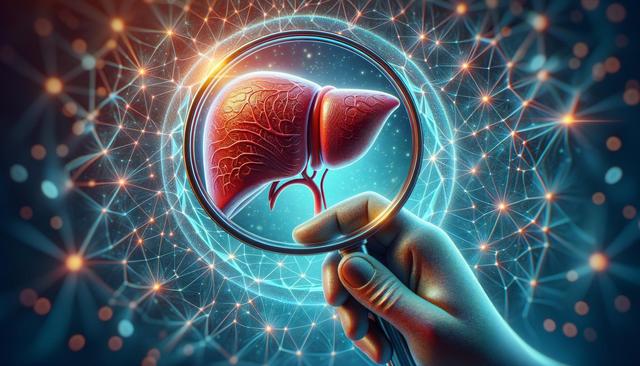
Understanding Liver Cirrhosis: Why Early Symptoms May Be Missing
What is Liver Cirrhosis?
Liver cirrhosis is a late stage of scarring (fibrosis) of the liver caused by many forms of liver diseases and conditions, such as hepatitis and chronic alcoholism. It occurs when the healthy tissue of the liver is gradually replaced with scar tissue, which can hinder the liver’s ability to function properly. Over time, this damage builds up and can lead to serious complications if not addressed early. However, liver cirrhosis often develops slowly and silently, which can delay diagnosis and treatment.
Because the liver is a resilient organ capable of repairing itself to a degree, the early stages of cirrhosis may not present any noticeable symptoms. This silent progression makes it all the more important to be aware of your risk factors, such as heavy alcohol use, viral hepatitis, and nonalcoholic fatty liver disease. Regular medical checkups and liver function tests can help catch issues before they develop into full-blown cirrhosis.
Why Symptoms Might Not Show Early
One of the challenges in diagnosing liver cirrhosis early is that the liver can continue to function even when damaged. The gradual loss of liver function means that symptoms often don’t appear until significant damage has occurred. This makes cirrhosis a particularly dangerous condition because by the time symptoms are noticeable, the disease may be in an advanced stage.
Common early signs that might be overlooked include:
- Mild fatigue and weakness
- Loss of appetite
- Nausea
- Unexplained weight loss
These symptoms are not unique to liver disease and are often attributed to other less serious health issues. This leads many individuals to ignore the signs, delaying medical attention. As the disease progresses, more obvious symptoms like swelling in the legs or abdomen, jaundice, or confusion due to toxin buildup in the brain may emerge.
Recognizing the Later Symptoms
When liver cirrhosis advances, the symptoms become more distinct and harder to ignore. At this stage, the liver’s ability to filter toxins, produce proteins, and regulate nutrients is significantly compromised, leading to a range of health issues. Understanding these later-stage symptoms is crucial for seeking timely medical help.
Some of the more pronounced symptoms include:
- Yellowing of the skin and eyes (jaundice)
- Swollen legs, ankles, or abdomen (edema or ascites)
- Easy bruising or bleeding due to clotting issues
- Confusion, drowsiness, or slurred speech (hepatic encephalopathy)
At this stage, lifestyle changes and medical interventions become essential to slow progression and manage complications. Regular follow-up with a healthcare provider is critical to monitor liver function and adjust treatment accordingly.
Who is at Risk and What Can Be Done?
Cirrhosis can affect anyone, but some groups are more vulnerable based on lifestyle, medical history, or genetic predisposition. Knowing your risk factors can help you take preventive measures and seek regular screenings if necessary.
High-risk groups include:
- Individuals with chronic hepatitis B or C
- People who consume alcohol heavily over a long period
- Those with obesity or metabolic syndrome
- Patients with nonalcoholic fatty liver disease (NAFLD)
Preventive steps include limiting alcohol intake, maintaining a healthy weight, and managing underlying conditions such as diabetes or high cholesterol. Vaccinations for hepatitis A and B can also offer protection. For those already diagnosed with liver disease, consistent monitoring and a liver-friendly diet can help prevent further damage.
When to See a Healthcare Provider
Because liver cirrhosis often progresses without symptoms, it’s important to be proactive about liver health. If you belong to a high-risk group or notice even mild signs such as fatigue or digestive discomfort, consult a healthcare provider. Early detection through blood tests, imaging, or liver biopsy can make a significant difference in managing the condition.
Key times to seek medical advice include:
- Persistent fatigue or weakness without a clear cause
- Unexplained weight loss or lack of appetite
- Swelling in the legs or abdomen
- Yellowing of the skin or eyes
Doctors may recommend lifestyle changes, medications to manage symptoms, or refer you to a liver specialist for further evaluation. In some cases, early intervention may even halt or reverse liver damage, especially when the underlying cause is addressed.
Conclusion: Stay Informed and Proactive
Liver cirrhosis is a serious condition that often develops silently, making early detection a challenge. By understanding the subtle early signs and recognizing the importance of regular checkups—especially for those at higher risk—you can take meaningful steps toward protecting your liver health. Knowledge and vigilance are key. If you or someone you know falls into a risk category, don’t wait for symptoms to become severe before taking action. Consult with a healthcare provider and consider routine liver function testing as part of your preventive health strategy.


